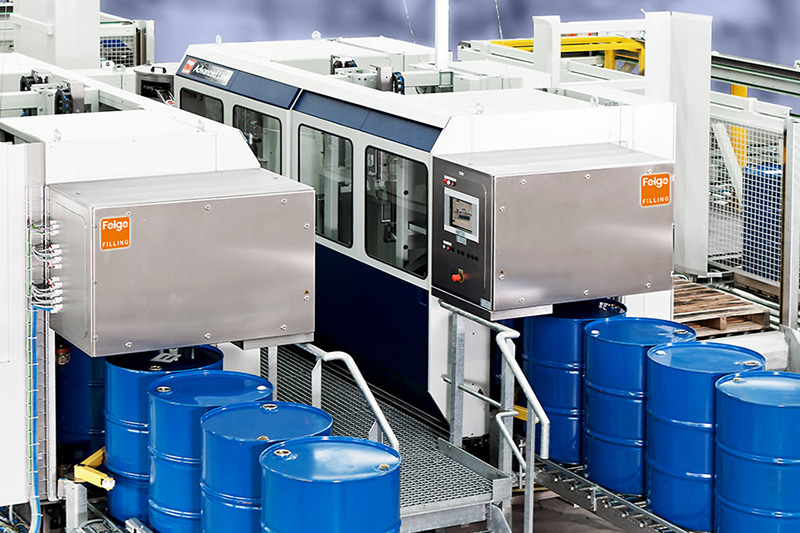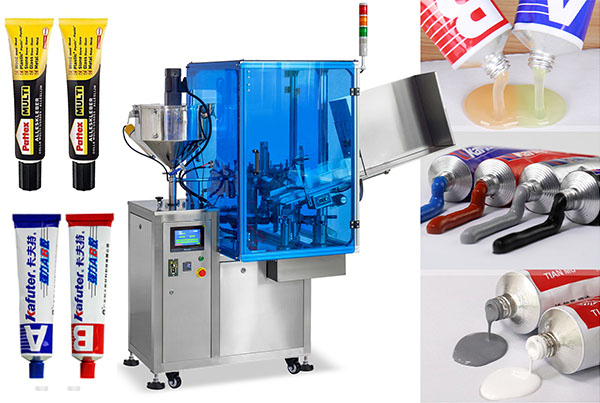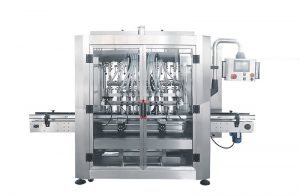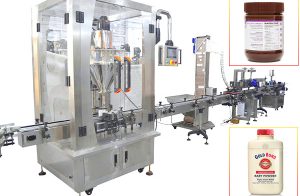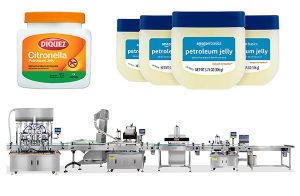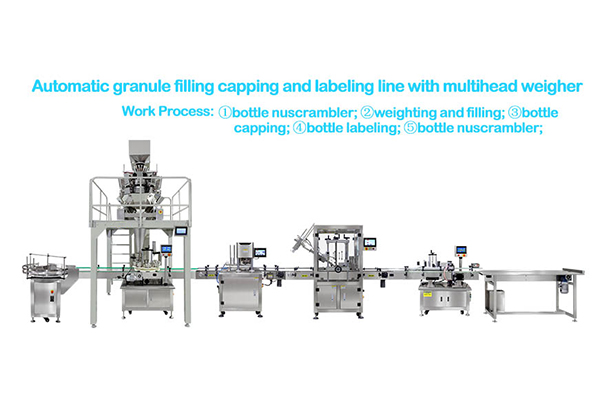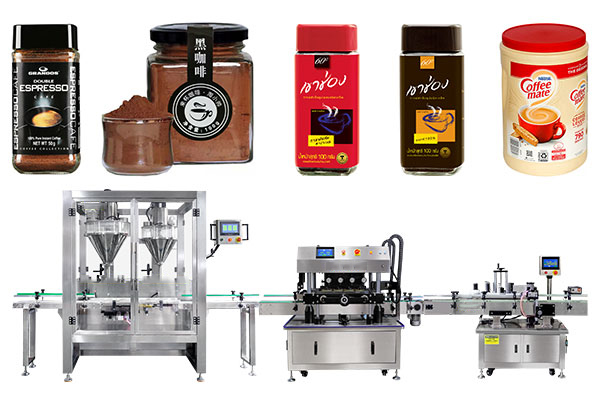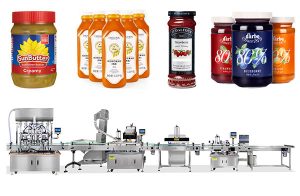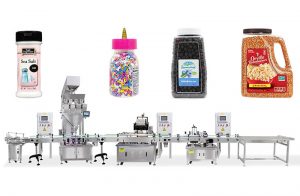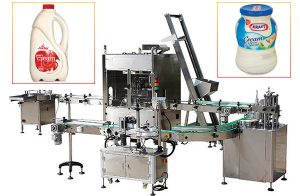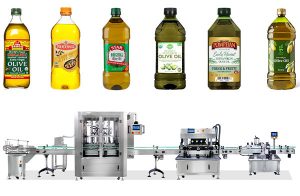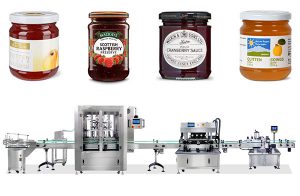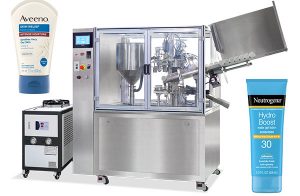This article provides an overview of the latest innovations in filling systems equipment. Filling systems are essential for many industries, from food and beverage to pharmaceuticals and cosmetics. The latest advancements in filling systems technology have made it easier to achieve precise accuracy and control when filling containers with liquids, powders, or other materials. This article will discuss the different types of filling systems available, the advantages of each system, and how they can be used to improve production efficiency. Additionally, this article will explore the various features and capabilities of the latest filling systems equipment, such as automatic cleaning and sanitizing functions, improved safety features, and more. By understanding the latest innovations in filling systems equipment, businesses can ensure they are using the most efficient and cost-effective methods for their production needs.
Innovative Technologies for Automated Filling Systems
Innovative technologies for automated filling systems are revolutionizing the way products are filled and packaged. Automated filling systems offer a wide range of advantages over manual processes, including improved accuracy, speed, and cost savings. These systems are designed to fill containers with liquids, powders, or granular materials quickly and accurately.
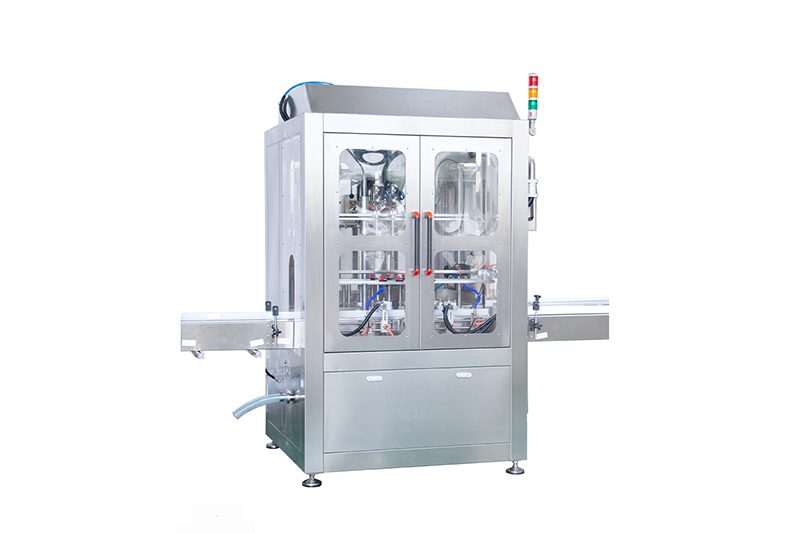
One of the most innovative technologies for automated filling systems is robotic automation. Robotic automation utilizes advanced robotics to automate the entire filling process from start to finish. This technology is capable of performing multiple tasks simultaneously, allowing for increased efficiency and accuracy. The robots can be programmed to accurately fill containers with a variety of materials and products in a fraction of the time it would take to manually fill them. This technology also eliminates human error, resulting in higher quality products with fewer defects.
Another innovative technology for automated filling systems is vision-guided robotics. This technology uses cameras and sensors to detect objects in the environment and guide the robot arm to precisely fill containers with the correct product. Vision-guided robotics can also be used to detect defects in products before they are packaged or shipped out, resulting in improved product quality and fewer customer complaints.
In addition to robotic automation and vision-guided robotics, other innovative technologies for automated filling systems include machine learning algorithms, which allow machines to learn from their mistakes and improve their performance over time; artificial intelligence (AI), which enables machines to make decisions based on data; and 3D printing, which allows for rapid prototyping of new products or components without requiring expensive tooling or molds.
These innovative technologies for automated filling systems offer a wide range of benefits that can help businesses increase efficiency, reduce costs, improve product quality, and reduce customer complaints. By utilizing these technologies, businesses can streamline their production processes while ensuring that their products meet the highest standards of quality.
Recent Developments in Filling System Components
Recent developments in filling system components have revolutionized the way that many industries handle their liquid filling needs. From the food and beverage industry to the pharmaceutical and chemical industries, these new components have allowed for more efficient and precise filling processes.
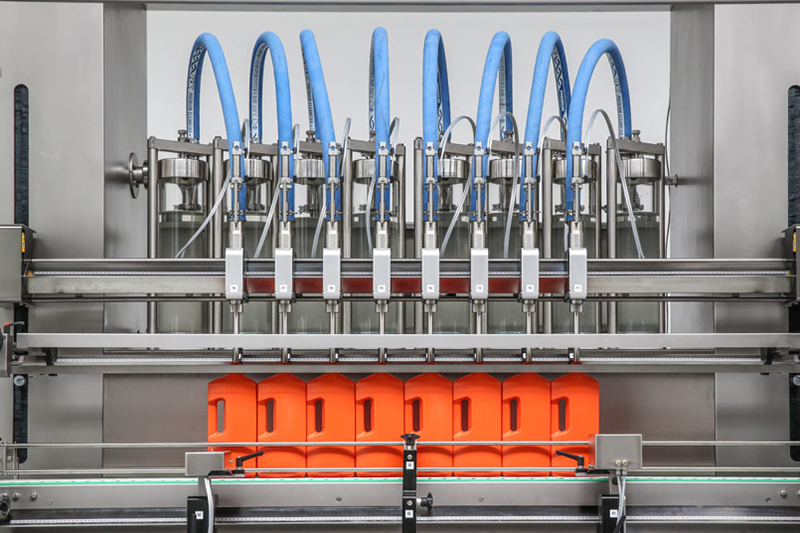
One of the most notable developments in filling system components is the introduction of servo-driven pumps. These pumps are designed to provide precise control over the flow rate, pressure, and other variables that are essential for accurate filling operations. This allows for greater accuracy and repeatability when it comes to filling containers with liquids, making it easier to achieve desired results. Additionally, these pumps can be used in a variety of applications, from low-volume laboratory settings to high-volume industrial production lines.
Another major development in filling system components is the use of vision systems. These systems use cameras and sensors to detect the position of bottles or other containers on a conveyor belt, allowing for precise placement of each container during the filling process. This eliminates potential errors caused by misaligned containers or incorrect positioning, resulting in higher quality results. Additionally, vision systems can be used to detect defects or contamination in containers before they are filled, allowing for more efficient production processes.
Finally, there have been advances in automated fillers as well. Automated fillers use robotic arms or other automated devices to accurately dispense liquids into containers at high speeds with minimal human intervention. This allows for faster production rates while still maintaining accuracy and repeatability in the process. Automated fillers can also be programmed with different recipes so that different products can be filled with different amounts of liquid quickly and accurately.
Overall, recent developments in filling system components have allowed for greater accuracy and efficiency when it comes to liquid filling operations across a variety of industries. From servo-driven pumps to vision systems and automated fillers, these new components are revolutionizing how liquids are handled during production processes.
Advances in Containment and Control of Fill Volumes
Advances in containment and control of fill volumes have enabled the construction industry to meet the challenges of environmental protection, safety, and cost-effectiveness. Containment and control of fill volumes is a critical component of many construction projects, as it helps to ensure that the project is built in compliance with regulations and safety standards.
The most common method for controlling fill volumes is through the use of engineered structures such as retaining walls, dams, and berms. These structures are designed to contain and control the volume of fill material used in a project. They are also used to protect against flooding or erosion, as well as providing support for roads and other infrastructure.
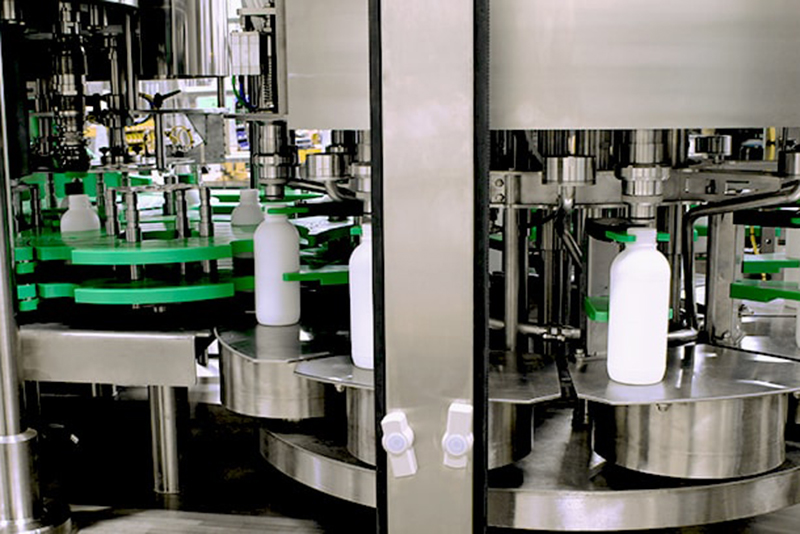
Recent advances in containment and control of fill volumes have made it possible to construct more efficient and cost-effective projects. New technologies such as geosynthetics have been developed that allow for better control over fill material placement and compaction. Geosynthetics are synthetic materials that are used to reinforce soil or other materials in order to increase their strength or durability. They can be used to reduce the amount of fill material needed for a project, which can result in significant cost savings.
In addition, new technologies such as GPS-based systems have been developed that allow for more precise placement of fill material. This can help reduce waste and improve efficiency by ensuring that the right amount of material is placed in the right location. This technology also allows for better monitoring of soil compaction during construction, which can help ensure that projects are built safely and efficiently.
Finally, advances in containment and control of fill volumes have also enabled more efficient use of existing resources. By using existing resources more efficiently, projects can be completed faster while still meeting safety standards and environmental regulations. This can help reduce costs while still ensuring quality results.
Overall, advances in containment and control of fill volumes have enabled construction projects to become more efficient, cost-effective, safe, and environmentally friendly. By using new technologies such as geosynthetics and GPS-based systems, construction companies can save time and money while still meeting safety standards and environmental regulations.
Benefits of High-Speed, Accurate Filling Systems
High-speed, accurate filling systems are an invaluable asset for any business that needs to fill containers with liquids or other materials. These systems offer a number of advantages that make them a must-have for any operation.
First and foremost, high-speed, accurate filling systems are incredibly efficient. They can fill containers quickly and accurately, ensuring that the right amount of material is placed in each container without any waste or spillage. This saves time and money by eliminating the need for manual labor and reducing the amount of material needed to complete the job. Additionally, these systems are often able to work with a variety of different materials, allowing businesses to quickly switch between products without having to purchase additional equipment.
Another benefit of high-speed, accurate filling systems is their accuracy. By using advanced technology such as sensors and automated processes, these systems can accurately measure and dispense the exact amount of material needed for each container. This eliminates the need for manual measurement and reduces errors that could lead to costly product waste or recalls. Additionally, these systems can be programmed to dispense different amounts of material depending on the container size or type, allowing businesses to easily adjust their production processes as needed.
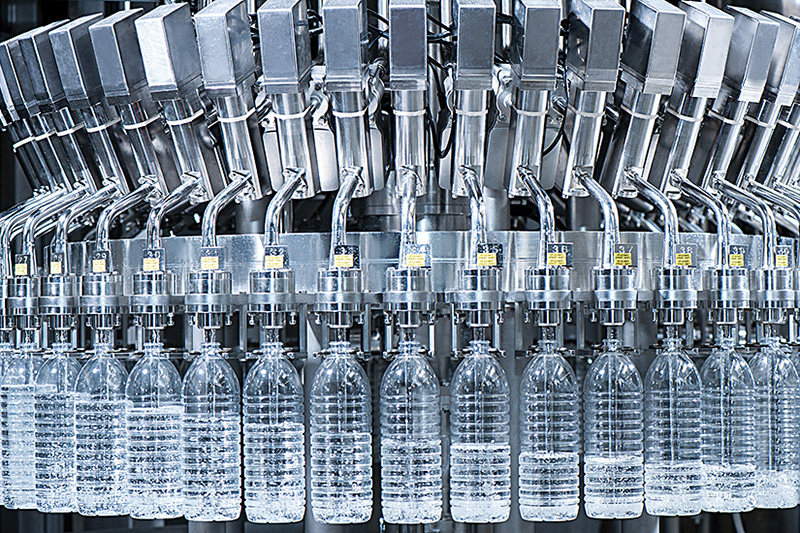
Finally, high-speed, accurate filling systems are incredibly reliable. These systems use robust components that are designed to last for years with minimal maintenance requirements. This ensures that businesses can count on their filling system to provide consistent results without having to worry about frequent breakdowns or repairs.
Overall, high-speed, accurate filling systems offer numerous benefits that make them an essential tool for any business that needs to fill containers with liquids or other materials quickly and accurately. From increased efficiency and accuracy to improved reliability and flexibility, these systems offer a number of advantages that make them an invaluable asset for any operation.
Emerging Trends in Automated Quality Assurance for Filling Systems
The emergence of automated quality assurance for filling systems is revolutionizing the way businesses manage their production processes. Automated quality assurance (AQA) provides a comprehensive and reliable method of ensuring that products are consistently produced to the highest standards. This technology is becoming increasingly popular in industries such as food and beverage, pharmaceuticals, and cosmetics, as it offers significant advantages over traditional manual quality assurance methods.
AQA systems use advanced sensors and algorithms to monitor the filling process in real-time. This allows for rapid detection of any potential problems or discrepancies in the production process. The system can then alert operators to any issues that need to be addressed before they become a problem. This helps to ensure that products are consistently produced to the highest standards, reducing the risk of product recalls or customer dissatisfaction.
Another advantage of AQA systems is that they can be used to improve product consistency by providing detailed data on each filling cycle. This data can be used to identify trends and adjust production parameters accordingly, ensuring that products are consistently produced with minimal variation. In addition, AQA systems can be used to optimize production processes by providing feedback on how best to improve efficiency and reduce waste.
Finally, AQA systems are designed with scalability in mind, allowing them to be easily adapted as production needs change over time. This makes them ideal for businesses looking for an efficient and cost-effective way of managing their quality assurance processes.
Overall, automated quality assurance for filling systems is an invaluable tool for businesses looking to streamline their production processes and ensure consistent product quality. With its ability to detect potential problems quickly and provide detailed data on each filling cycle, AQA systems offer significant advantages over traditional manual quality assurance methods. As such, this technology is becoming increasingly popular in industries such as food and beverage, pharmaceuticals, and cosmetics.
Conclusion
The latest innovations in filling systems equipment have revolutionized the way companies store and distribute their products. From automated packaging machines to advanced sensors and robotics, these new technologies are helping businesses streamline their processes and increase efficiency. With the help of these cutting-edge systems, companies can now produce higher quality products with greater accuracy and speed than ever before. The potential for cost savings and improved productivity is immense, making the latest innovations in filling systems equipment an invaluable asset for any business.

